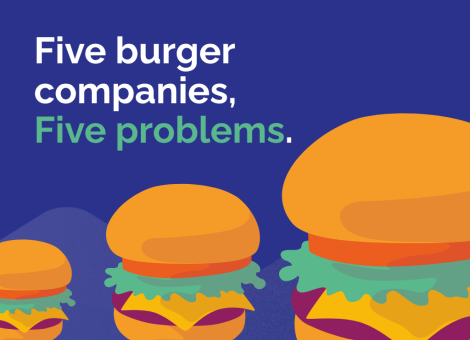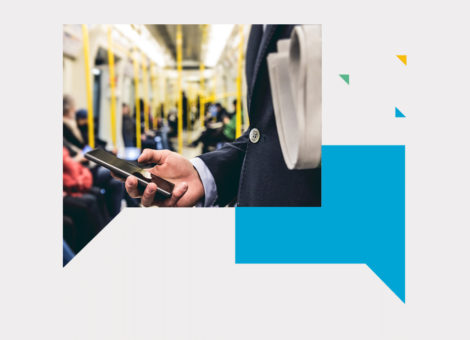Around the world and across both our personal and professional lives, technology and the automated benefits it brings have allowed us to work smarter, faster, and more efficiently. From traveling and communicating to building new infrastructure and saving lives, we’ve seen a wave of technology advancements in recent years — advancements that not only elevate how we perform daily tasks but allow us to make use of otherwise underutilized assets in our businesses and personal lives.
New technologies have given us the ability to exploit such asset types in the fuel and convenience retail industry — assets such as the forecourt roof, screens on the pump, and customer or market demographic information. For instance, understanding which vehicle type your customer prefers, based on data gathered from the pump or new technologies in the forecourt, can prompt customization in your offering. Additionally, underutilized assets such as the public bathrooms at your station can be bolstered by technology: What if you knew, for a fact, that your bathrooms were the best around for the next 50 miles? Wouldn’t you exploit that marketing opportunity? Would you push advertisements for that bathroom to approaching mobile phones, if you could?
Fuel retail and convenience store technology — is shaping not only the interactions that happen at the pump and inside the store between brands and consumers, but the end-to-end management of fuel pricing, as well. Technology’s impact on certain key areas of fuel and convenience retail is, of course, a massive topic we cannot hope to comprehensively cover in one article. Here, we’ll simply boil it down into some key opportunities — and further discuss the potential pitfalls of investing in new technology for your fuel retail network.
Fuel Pricing Management
One area in which technology has offered significant opportunity is in fuel pricing management. Pricing managers now have access to predictive models, data science, and automation to make their lives tremendously easier. As markets mature and demand cycles, pricing factors and the competitive landscape become increasingly complex, these models and systems are essential to building the best pricing strategy possible.
Fuel pricing software can synthesize and extract meaning from massive amounts of data in ways that humans cannot. With accurate and timely analytics to use in real-time pricing, fuel pricing managers can ensure the best possible price is proposed — even if prices in their markets are fluctuating on a daily or hourly basis. Without fast, responsive pricing systems, you’re leaving money on the table.
Speed of Integration
When you integrate those fast, responsive pricing systems with the rest of your core technology ecosystem, from POS to ERP, you can make more informed decisions about your retail network. This effort is especially important when it comes to large networks made up of hundreds of sites.
If you can’t automate, you can’t scale. You need seamless integration between all of your systems with automatic communication between each other. And when you have the right people to complement that technology, and use holistic insight to adapt their network strategy, you’re on the right path to dominating your market.
At the Fuel Station
At the fuel station, pricing data providers and personalized loyalty apps are changing the way consumers interact with your products. With the kind of hyper-transparency into pricing these apps enable, pricing managers have to be more agile than ever.
But convenience store technology isn’t just about interfacing with the consumer — it’s also an opportunity to close the communication gap between the site and the centralized pricing team. For instance, integrated photo sharing apps improve collaboration by allowing pricing analysts and planners from multiple locations to understand the effects of their changes on individual sites.
All of these interactions are enabled by tooling the fuel station accordingly: bringing on remote applications to report real-time price changes, pulling in data from large groups (crowdsourcing), integrating photo sharing applications to share images from the site directly to the analyst, etc. In terms of retooling a station for enhanced opportunity, technology adoption is a good first step.
The Technology Litmus Test
While there is endless opportunity in bringing new technologies into your fuel and convenience retail strategy, you must also remain somewhat cautious. Before implementing anything new, think through the different effects these technologies might have from a technical, economic, ethical, and strategic standpoint.
- Technical: Pull together a technology architecture overview to understand how feasible the connections between all of these systems are. Do they all speak the same protocols and languages?
- Economic: Look at the numbers. Try to understand the incremental revenue gains and weight them against the decreasing cost of operation, improvements in cash flow, customer retention, and potential gains in market share.
- Ethical: As with most things, the ethical component of these tests is a little more difficult. How strong is the opposition to these strategies from neighboring communities? And what are your customers’ preferences on personalization vs privacy? Will they enjoy the increasingly personalized experience technology can provide, or will they feel that their privacy is invaded?
- Strategic: This component is really speaking to the competition. Will this new technology give you a competitive edge? Try to weigh the strategic relevance of this technology against the potential economic gains.
By applying these tests to potential technology investments, you can understand which technologies make the most sense for you in your market and what to expect from them. Remember, any litmus test that always gives you the exact answer you’re seeking may not be the right litmus test.
Potential Pitfalls: Overuse and Oversaturation
We began by speaking about using technology to optimize your underutilized assets — but one pitfall of technology implementation is that you can easily overuse those assets as well, causing an inflection point for your opportunity to achieve what you had intended. For example, social media — designed to connect us all — can become quite anti-social, in terms of both the content shared on social platforms and people’s tendency to ignore their friends and families in favor of chatting on social platforms.
You can see this over-saturation effect in various markets, where new opportunities become so flooded that they end up having the opposite intended effect. In the fuel and convenience industry, network planners should be careful to walk the line between using their technical assets to their fullest potential…and using them so much that customers are scared off. Consider, for example, how your customers may feel about hyper-personalization at every pump and register. Is that a positive, because offers are better tailored and more efficient? Or will personalization instead make your customers feel less like individuals, and more like part of your marketing strategy? Such considerations are nuanced — and extremely important.
The Takeaway
When you’re able to find the balance between strategic use and overuse of your assets via technology and automation, you can connect not only your brand to your customers, but your employees to each other across functions and locations.
Fuel and convenience store technology enables the visibility, agility, and speed that you need to survive in increasingly complex markets. To learn more about balancing dynamic success factors in your fuel market, read our white paper, “Uncover Hidden Value with 7 Elements for Fuel and Convenience Retail Success.


